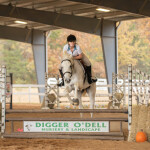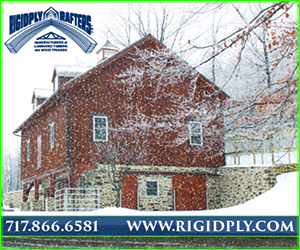With performance season in full throttle, equine trainers and owners want to find the best methods to keep their equine athlete in top shape. Two methods that trainers and owners seek out might include chiropractic and acupuncture therapy. Chiropractic and acupuncture therapy are performed by licensed veterinarians and have plenty of benefits for horses.
Dr. Rilla Evelyn Reese Hanks, DVM, is a licensed veterinarian in West Tennessee and performs chiropractic and acupuncture for her clients.
“Chiropractic is a manual therapy that focuses on diagnosing and treating biomechanical dysfunctions in the spine. When a joint in the spine loses its normal range of motion chiropractors refer to this as a vertebral subluxation complex (VSC). This loss of motion can result in decreased overall flexibility and muscle soreness. Some common causes of VSCs include strenuous or inconsistent training, performance events, trauma, poor fitting saddle, prolonged stall rest, birthing difficulties, and general anesthesia.”
Dr. Reese Hanks says that, “horse owners and trainers need to be aware of the symptoms associated with a VSC.” Signs of neck or back pain include:
- reduced performance
- pinning of ears when being saddled or ridden
- tossing of the head
- hollowing of the back
- sensitivity to touch
Specific disciplines may notice performance issues:
- difficulties with lead changes
- problems with lateral bending
- refusing jumps
“Most clinical signs are associated with pain, but changes in gait and abnormal posture may also indicate a problem.”
Just like when humans go to the chiropractor, Dr. Reese Hanks says that “a chiropractic exam includes a thorough physical exam and observation of the horse in motion. A technique called motion palpation is then used to diagnose a VSC. When a joint in the spine is discovered to have little or no motion an adjustment is then performed. An adjustment is a low amplitude, high velocity thrust which restores motion to the spine. Chiropractic care is a safe, non-invasive tool that when used in conjunction with traditional veterinary medicine will keep horses healthy and performing at their optimal level.”
Acupuncture
Dr. Reese Hanks also offers acupuncture to clients. She states, “acupuncture has been practiced as a treatment modality in humans for over 2,000 years, but only in the last century has its use been extended to the veterinary community. As our understanding of acupuncture has grown, so have its applications in clinical practice. Myself, along with several vets in the area offer veterinary medical acupuncture as a drug-free adjunctive therapy for our patients.”
Medical acupuncture acts at many different levels on the patient: locally, regionally and systemically.
Locally
At the local level, acupuncture needling and/or electrical stimulation (“e-stim”) cause increased blood flow to the affected area as well as the release of local inflammatory mediators, all of which promote local tissue healing.
Regionally
The stimulus of the acupuncture needle also travels up the nerve to a regional spinal cord segment, causing a decrease in pain signaling at the level of the dorsal horn. Thus parts of the body not directly treated with needles can benefit from acupuncture; if an area of the body is painful but not easily treated directly with acupuncture (the GI tract or very deep muscle bellies, for example) needling in a more superficial area that shares the same spinal segmental innervation can provide regional analgesia (pain relief).
Systemically
The nerve signaling that begins locally and moves regionally to the spinal cord is then extended all the way to the central nervous system, providing systemic pain relief by causing suppression of pain signaling in the brain stem. At the same time, other structures in the brain stem and midbrain are stimulated to release neurotransmitters and hormones responsible for a sense of calm and well-being. Thus systemically, acupuncture serves to promote pain relief and relaxation throughout the body.
While acupuncture provides profound pain relief and can improve many musculoskeletal and peripheral neurologic conditions, it is not a substitute for a medical diagnosis and should never replace appropriate veterinary care. The greatest results are seen when acupuncture is performed by a trained, certified veterinarian in conjunction with appropriate traditional therapy.











